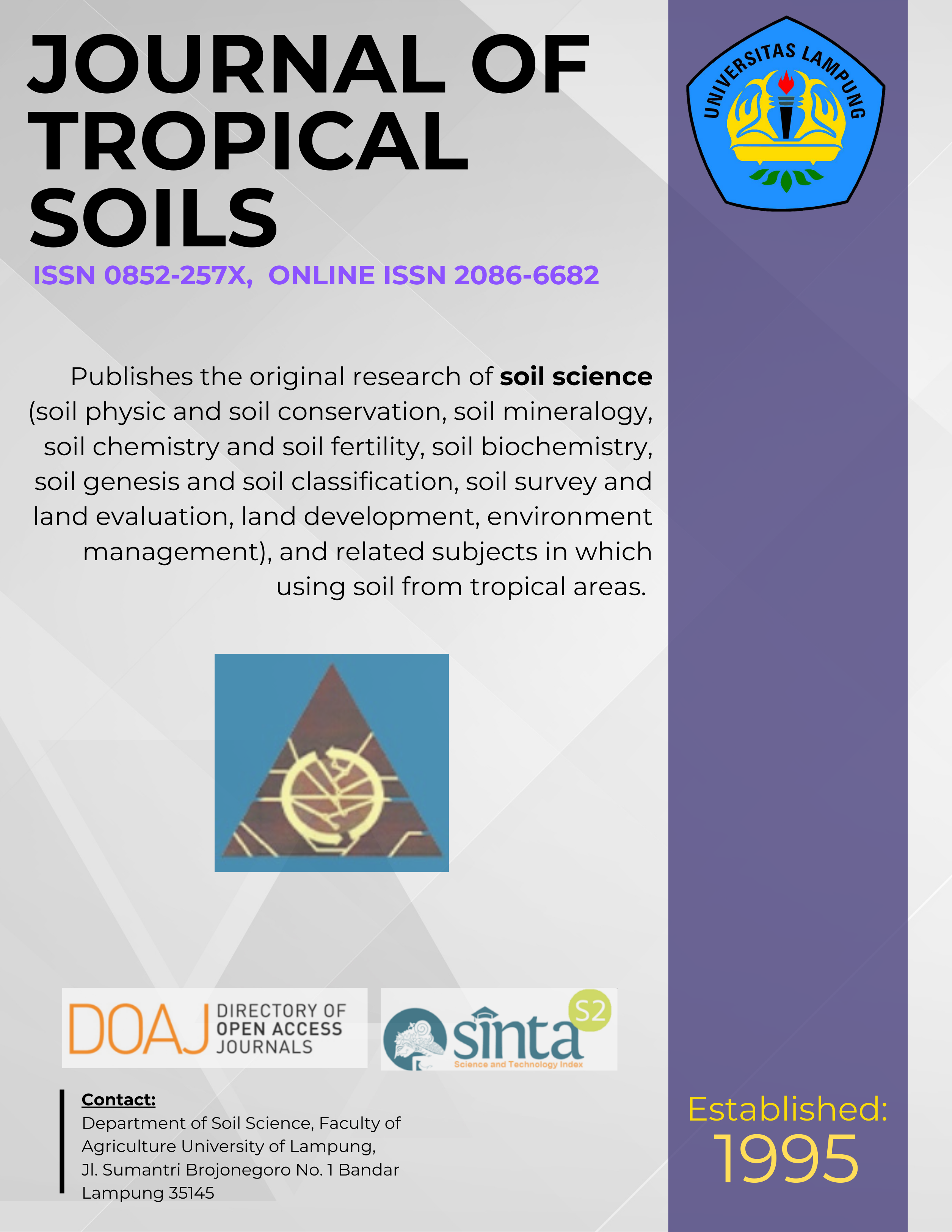Kinetics Approach of Biodegradation of Petroleum Contaminated Soil by using Indigenous Isolated Bacteria
Main Article Content
Abstract
The bioremediation of petroleum contaminated soil was investigated using a microscale Landfarming. The Indigenous
bacteria, Pseudomonas pseudoalcaligenes, Bacillus megaterium, and Xanthobacter autotrophicus were isolated from the contaminated sites Sungai Lilin Jambi Pertamina Ltd and used further in the bioremediation experiments. The biodegradation rates of petroleum contaminated soil in the presence of the isolated bacteria were studied by using the chemical kinetics approach. The reaction orders were studied by using the differential method and the reaction rate constants were studied by using the integral method. The results showed that the reaction orders were 1.0949, 1.3985, 0.8823, and the reaction rate constants were 0.0189, 0.0204, 0.0324 day-1, respectively. Considering the values of reaction orders and reaction rate constants, the biodegradation rate of contaminated soil by using
each bacteria had significantly different value; Xanthobacter Autotrophicus bacteria could degrade the petroleum
oil sludge fastest than the others.
Keywords: Biodegradation, indigenous bacteria, kinetics, petroleum oil
Downloads
Article Details
Section
License for Authors
Authors who publish with this journal agree to the following terms:
- Authors retain copyright and grant the journal right of first publication with the work simultaneously licensed under a Creative Commons Attribution License that allows others to share the work with an acknowledgement of the work's authorship and initial publication in this journal.
- Authors are able to enter into separate, additional contractual arrangements for the non-exclusive distribution of the journal's published version of the work (e.g., post it to an institutional repository or publish it in a book), with an acknowledgement of its initial publication in this journal.
- Authors are permitted and encouraged to post their work online (e.g., in institutional repositories or on their website) prior to and during the submission process, as it can lead to productive exchanges, as well as earlier and greater citation of published work (See The Effect of Open Access).
License for Regular Users
Other regular users who want to cite, distribute, remix, tweak, and build upon author’s works, even for commercial purposes, should acknowledge the work’s authorship and initial publication in this journal, licensed under a Creative Commons Attribution License.

